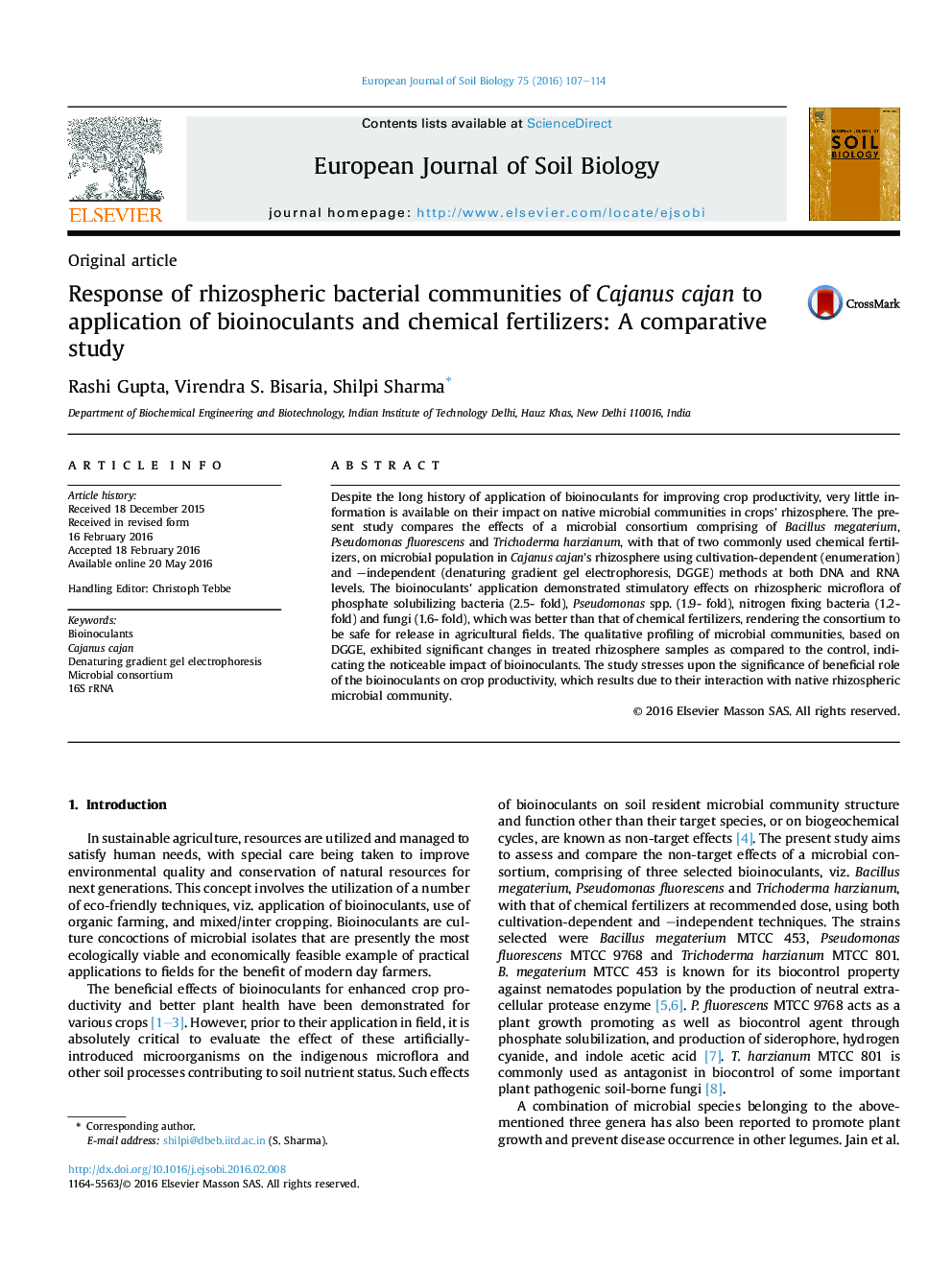| Article ID | Journal | Published Year | Pages | File Type |
|---|---|---|---|---|
| 4391643 | European Journal of Soil Biology | 2016 | 8 Pages |
•Efficient consortium of bioinoculants for enhancement of grain yield of Cajanus cajan worked better than chemical fertilizers.•Enhancement in beneficial non-target microflora indicating the consortium to be ecologically “safe”.•Significant impact of bioinoculants with distinct rhizospheric bacterial profiles for each treatment.•Importance of interaction of bioinoculants with native microbial community in rhizosphere for plant growth promotion evident.
Despite the long history of application of bioinoculants for improving crop productivity, very little information is available on their impact on native microbial communities in crops' rhizosphere. The present study compares the effects of a microbial consortium comprising of Bacillus megaterium, Pseudomonas fluorescens and Trichoderma harzianum, with that of two commonly used chemical fertilizers, on microbial population in Cajanus cajan's rhizosphere using cultivation-dependent (enumeration) and –independent (denaturing gradient gel electrophoresis, DGGE) methods at both DNA and RNA levels. The bioinoculants' application demonstrated stimulatory effects on rhizospheric microflora of phosphate solubilizing bacteria (2.5- fold), Pseudomonas spp. (1.9- fold), nitrogen fixing bacteria (1.2- fold) and fungi (1.6- fold), which was better than that of chemical fertilizers, rendering the consortium to be safe for release in agricultural fields. The qualitative profiling of microbial communities, based on DGGE, exhibited significant changes in treated rhizosphere samples as compared to the control, indicating the noticeable impact of bioinoculants. The study stresses upon the significance of beneficial role of the bioinoculants on crop productivity, which results due to their interaction with native rhizospheric microbial community.
